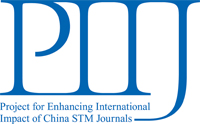Background
Acupuncture has been widely used to relieve migraine-related symptoms. However, the findings of previous systematic reviews (SRs) and meta-analyses (MAs) are still not completely consistent. Their quality is also unknown, so a comprehensive study is needed.
Objective
To evaluate the reporting and methodological quality of these MAs concerning acupuncture for migraine, and summarize evidence about the efficacy and safety of acupuncture for migraine.
Search strategy
PubMed, Embase, Cochrane Library, China National Knowledge Infrastructure, Chinese Biomedical Databases, Wanfang Data, and VIP databases were searched from inception to September 2020, with a comprehensive search strategy.
Inclusion criteria
The pairwise MAs of randomized controlled trials (RCTs) concerning migraine treated by acupuncture or acupuncture-based therapies, with a control group that received sham acupuncture, medication, no treatment, or acupuncture at different acupoints were included.
Data extraction and analysis
Two independent investigators screened studies, extracted relevant data, and assessed reporting and methodological quality using PRISMA 2009 and AMSTAR 2, then all results were cross-checked. Spearman correlation test was used to evaluate the correlation between reporting and methodological quality scores.
Results
A total of 20 MAs were included in this study. The included MAs indicated that acupuncture was efficacious and safe in preventing and treating migraine when compared with control intervention. There was a high correlation between reporting and methodological quality scores (rs = 0.87,
P < 0.001). The quality of the included SRs needs to be improved mainly with regard to protocol and prospective registration, using a comprehensive search strategy, summarizing the strength of evidence body for key outcomes, a full list of excluded studies with reasons for exclusion, reporting of RCTs’ funding sources, and assessing the potential impact of risk of bias in RCTs on MA results.
Conclusion
Acupuncture is an effective and safe intervention for preventing and treating migraine, and could be considered as a good option for patients with migraine. However, the reporting and methodological quality of MAs included in this overview is suboptimal. In the future, AMSTAR 2 and PRISMA tools should be followed when making and reporting an SR with MA.
 Table of Content
Table of Content














